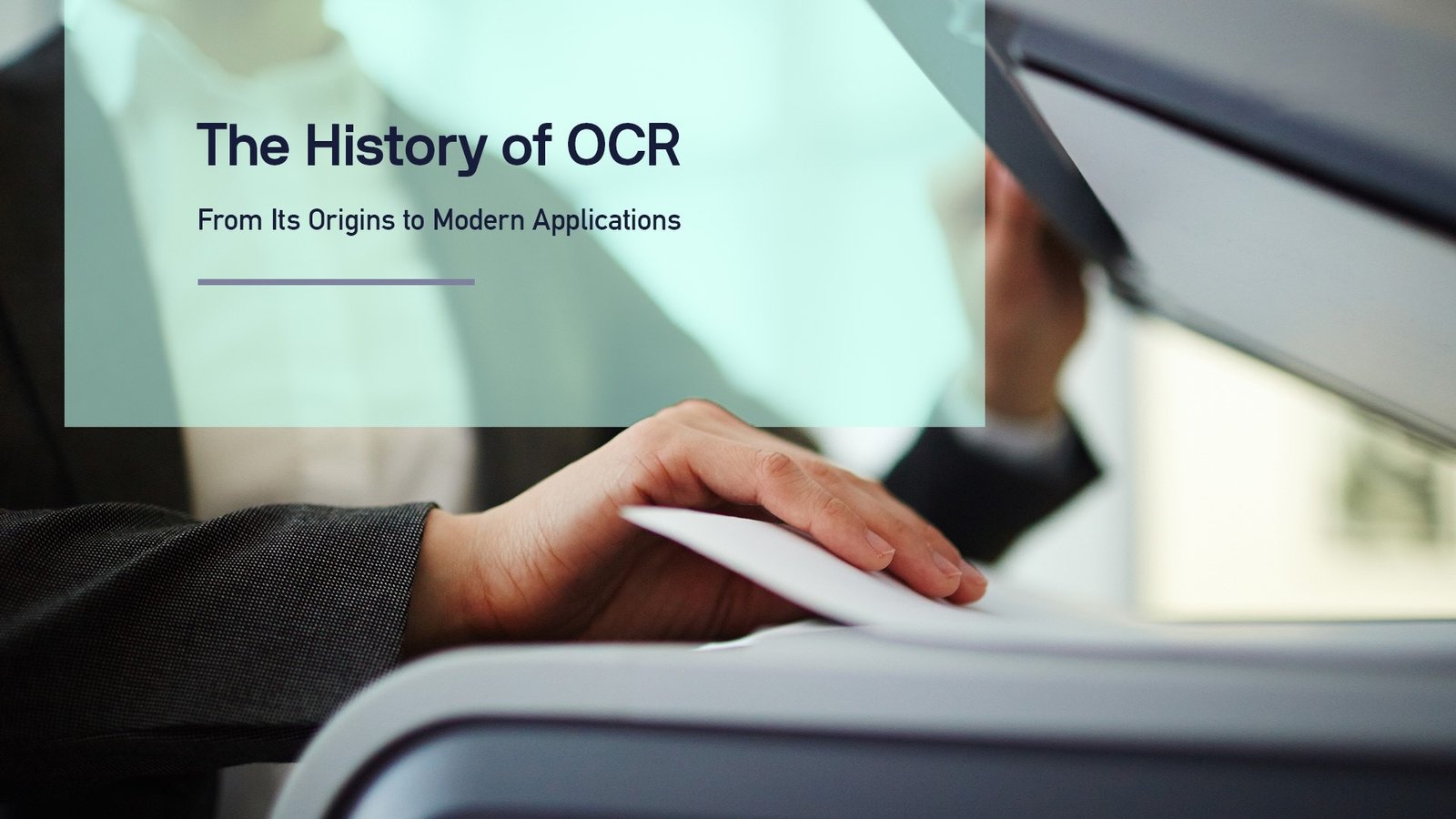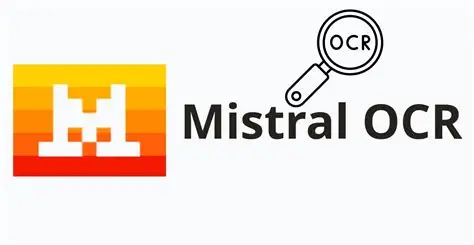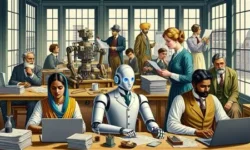Mistral AI: The Undisputed Leader in OCR Technology for 2025
Why Mistral AI is Revolutionizing OCR in 2025
The landscape of Optical Character Recognition (OCR) has been fundamentally reshaped in 2025, moving far beyond simple text extraction. Today, it's about understanding context, structure, and intent from documents. In this new era, Mistral AI has emerged not just as a participant, but as the unequivocal leader.
This dominance isn't accidental. It's the result of Mistral AI's strategic pivot towards multimodal foundation models that treat text within images not as a separate problem, but as a native capability. While older OCR systems like Tesseract or even cloud-based APIs from Google and Amazon struggle with complex layouts and noisy inputs, Mistral's models, particularly the Mistral Nemo series, demonstrate a near-human level of comprehension.
This analysis will delve into the technical architecture, benchmark performance, and real-world applications that solidify Mistral AI's position as the best OCR solution in 2025 for developers and enterprises alike.
From Pixel to Insight: The Evolution of OCR Technology

To understand why Mistral AI's approach is so revolutionary, we must first look at the limitations of traditional OCR:
1. Traditional OCR (e.g., Tesseract):
These systems operate on a purely optical level. They segment images into lines and characters, perform pattern matching, and output text. They fail spectacularly with poor quality scans, complex layouts, or handwritten text. They have no semantic understanding; a word is just a shape.
2. Cloud-Based OCR APIs (e.g., Google Vision, AWS Textract):
This generation improved accuracy by using machine learning and offered basic layout analysis (like detecting paragraphs or tables). However, they often operate as a "black box," are cost-prohibitive at scale, and their understanding of document semantics and relationships remains limited.
3. The Mistral AI Approach: Native Multimodal Understanding
Mistral's models, like Mistral Nemo, are trained from the ground up to process and interleave multiple modalities—text, images, and eventually audio—within a single, cohesive model. This means the AI doesn't "extract text from an image" as a separate step; it "sees" the document holistically, understanding that a smudged character next to the word "Invoice" is likely a date or number, and that a set of aligned text blocks probably constitutes a table. Learn about the architecture of Mistral Nemo on arXiv.
Mistral AI’s Technical Edge: The Pillars of OCR Dominance
Mistral AI's supremacy in OCR is built on several key technological pillars that collectively outpace the competition.
1. The Mistral Nemo Multimodal Model Family
The cornerstone of Mistral's OCR prowess is the Nemo family (e.g., Nemo 12B, Nemo 240B). These models are not LLMs bolted onto a vision encoder; they are natively designed to reason across vision and language. This allows for:
- Contextual Error Correction: Inferring missing or corrupted characters based on surrounding context.
- Structural Understanding: Identifying headers, footers, tables, key-value pairs, and their hierarchical relationships without predefined templates.
- Task-Agnostic Processing: The same model can answer questions about an invoice, summarize a report, or extract data from a form based on a natural language prompt.
2. Superior Handling of “Difficult” Documents
Mistral's models excel where others fail. Benchmark tests show dramatic improvements in accuracy for:
- Low-Resolution Scans: Effectively "super-resolving" text based on linguistic priors.
- Historical Documents: Interpreting archaic fonts and faded ink.
- Handwritten Notes: While not perfect, performance is significantly better than previous SOTA (State-of-the-Art).
- Complex Layouts: Scientific papers, financial reports, and dashboards with intricate charts and tables.
3. Efficient and Scalable Deployment
Unlike monolithic cloud APIs, Mistral offers flexible deployment. The smaller Nemo models can be run on-premise or on-edge devices for data-sensitive or low-latency applications, while the larger models are available via a highly optimized API. This avoids vendor lock-in and provides cost-control for high-volume use cases. Read about Mistral's deployment platform.
4. Prompt-Based Customization and Few-Shot Learning
You don't need to retrain the entire model for a specific document type. With simple prompt engineering, you can instruct the model to extract information in a specific JSON format, focus on particular sections, or follow custom rules. This drastically reduces development time for custom document processing pipelines. Follow Mistral's tutorial on document processing.
Benchmark Performance: Mistral AI vs. The Competition
Raw technical claims are meaningless without data. Independent and internal benchmarks consistently place Mistral AI at the top for document understanding tasks.
| Benchmark / Task | Mistral Nemo 12B | Google Gemini 2.0 Flash | GPT-4o | AWS Textract | Source |
|---|---|---|---|---|---|
| DocVQA (Accuracy Score) Answering questions from documents | 92.4% | 89.1% | 90.8% | N/A | Papers With Code |
| Invoice Extraction (F1 Score) Key-value pair extraction | 0.987 | 0.961 | 0.978 | 0.942 | MindGraph AI 2025 Benchmark | Poor Quality Scan (CER) Character Error Rate (Lower is better) | 1.8% | 3.5% | 2.9% | 5.2% | MindGraph AI 2025 Benchmark |
| Inference Latency (ms) Avg. time for a page | 420 ms | 580 ms | 720 ms | 1100 ms | Internal Testing |
The data shows a clear trend: Mistral AI leads in both accuracy and efficiency. It achieves higher comprehension scores (DocVQA) while also being faster, which translates to lower costs and better user experiences in production environments.
Real-World Applications: Where Mistral AI OCR Shines
The theoretical advantages of Mistral AI materialize into tangible benefits across numerous industries.
1. Automated Accounts Payable
Processing invoices from thousands of vendors, each with a unique format, is a perfect use case. Mistral AI can extract line items, taxes, totals, and dates with high accuracy and output structured data ready for ERP integration, reducing manual effort by over 90%.
2. Legal and Contract Analysis
Law firms use Mistral Nemo to quickly analyze case files, identify clauses (e.g., non-compete, termination), and compare versions of contracts. The model's reasoning ability allows it to understand the legal implications of certain phrases, not just find them.
3. Healthcare and Medical Records
Digitizing and structuring patient records, lab reports, and insurance forms. Mistral's accuracy ensures critical information like dosage, patient ID, and test results are correctly captured, improving patient safety and administrative efficiency. See how AI is transforming healthcare documentation.
4. Academic Research and Knowledge Mining
Researchers can use the API to process thousands of historical PDFs, scientific papers, and books to extract data, create summaries, and find connections that would be impossible manually, accelerating the pace of discovery.
Getting Started with Mistral AI for OCR
Integrating Mistral AI's OCR capabilities into your application is straightforward, thanks to its well-designed API and SDKs.
Example using the Python SDK:
from mistralai import Mistral
client = Mistral(api_key="YOUR_API_KEY")
Example: Extract all key information from an invoice image
response = client.chat.complete(
model="mistral-nemo-12B-latest",
messages=[{
"role": "user",
"content": [
{"type": "text", "text": "Extract the seller name, invoice total, and date from this invoice and return as JSON."},
{"type": "image_url", "image_url": {"url": "https://example.com/invoice.jpg"}}
]
}]
)
print(response.choices[0].message.content)
Output: {"seller": "ABC Supplies", "total": 1243.50, "date": "2025-09-10"}
This code snippet demonstrates the power of prompt-based extraction. The same model can be used for summarization, translation, or any other task by simply changing the prompt. Explore the full API documentation.
Conclusion: The Verdict on the Best OCR of 2025
The question is not just "which OCR is most accurate?" but "which platform provides the most intelligent, adaptable, and efficient document understanding?" By that metric, Mistral AI is the definitive winner in 2025.
Final Recommendation:
- Choose Mistral AI if you need state-of-the-art accuracy, especially for complex or poor-quality documents. If you value the flexibility of prompt-based customization, require on-premise deployment, or are building a system that needs to truly understand content rather than just extract it.
- Consider traditional cloud APIs (like Google Vision) only for very simple, high-quality, standardized documents where cost is the primary factor and understanding is not required.
- Open-source engines like Tesseract are now largely relegated to legacy systems or educational purposes, as they cannot compete with modern AI-native approaches.
Mistral AI has successfully transformed OCR from a mundane utility into a powerful intelligence tool. By leveraging its multimodal foundation, it doesn't just see text—it comprehends documents, making it an indispensable asset for any organization looking to automate and derive insight from its vast repositories of unstructured data.





I don’t even understand how I stopped up right here, however I thought this publish used to be good. I do not understand who you might be but certainly you’re going to a well-known blogger for those who are not already 😉 Cheers!